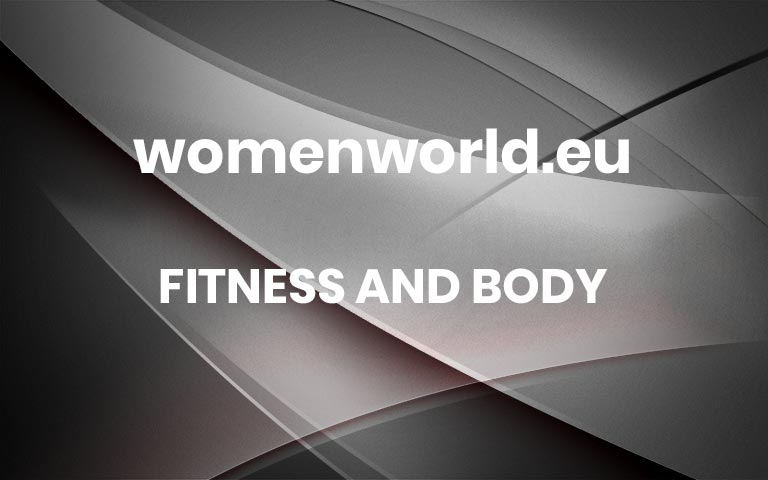4 Moves That’ll Help You Build Seriously Strong Legs
Strong, toned legs have been topping our Pinterest boards for years, but there’s more to them than just looking good in a miniskirt. Building strength in your lower body supports everything from running and jumping to mobility, athletic performance and lifting power. It’s all about creating a solid foundation by training all the major lower-body muscles so you can move better, feel stronger and avoid common injuries.Personal trainer and fitness coach Carly Swartz shares her go-to tips for staying motivated on leg day, plus four must-do exercises to help you build serious lower-body strength.READ MORE: “I’m A Personal Trainer And This Is Exactly How You Should Train Your Legs”How Do I *Actually* Stick to Leg Day?“Set short-term and long-term goals that keep you accountable,” says Carly. “And build a routine you can stick to – whether that’s training solo, trying a new class or working with a personal trainer for extra support.”She also swears by switching things up when motivation dips. “If your current routine isn’t challenging you, mix it up. That could mean trying new exercises or changing the intensity.” And one underrated tool? “A good playlist! Music makes a big difference to keep you going throughout your session.”“You have to do the work regardless of how you are feeling; health is a lifetime commitment!”The ExercisesTry these must-do exercises for quads from the gods. Do three or four sets of eight to 10 repetitions. Remember to increase your weights and repetitions weekly.SquatsVariations:Beginner: Bodyweight squats
Advanced: Squats with a barbell or dumbbells
Form Guidelines:
Stance: Position your feet shoulder-width apart, with toes slightly turned out.
Core Engagement: Engage your core muscles to maintain stability throughout the movement.
Movement: Bend your knees and hips to lower your body, ensuring your knees track over your toes without extending past them.
Back Alignment: Keep your spine neutral, avoiding arching or rounding your back.
Head Position: Keep your head centred and gaze forward to maintain balance.DeadliftsVariations:Beginner: Use light weights
Advanced: Using a barbell or heavier dumbbells
Form Guidelines:
Stance: Position your feet shoulder-width apart, with toes pointing straight ahead. If using a barbell ensure that the barbell is over the midfoot, a few inches from the shins.
Core Engagement: Engage your core muscles to maintain stability throughout the movement.
Movement: Hinge at the hips and bend your knees to lower your torso, keeping the dumbbells/barbell close to your body as it passes by your thighs and shins. The degree of knee bend will affect muscle engagement: more bend emphasises the glutes, while less bend targets the hamstrings.
Back Alignment: Maintain a neutral spine, avoiding any arching or rounding of the back.
Head Position: Keep your head centred and aligned with your spine to ensure proper posture.READ MORE: This 15-Minute Full-Body Workout Is Perfect For BeginnersHip ThrustsVariations:Beginner: Lie on your back on a mat without any weight, or use a light weight.
Advanced: Use a barbell or dumbbells on a bench or step (the lower the step, the easier it is).
Form Guidelines:
Stance: Position your feet shoulder-width apart, with toes pointing slightly outward. Place the dumbbell/barbell in the crease of your hips.
Core Engagement: Engage your core muscles to maintain stability throughout the movement.
Movement: If you’re on a bench or step, position your upper back on the bench or step. Push through your heels to lift your glutes off the floor. If you’re holding a barbell, grip it underneath. Squeeze your glutes at the top of the movement.
Back Alignment: Maintain a neutral spine, avoiding any arching when lifting the glutes off the floor.
Head Position: Keep your head tucked in to avoid pushing it back and compromising the neck.Bulgarian Split SquatsVariations:Beginner: Bodyweight Bulgarian split squats
Advanced: Using dumbbells
Form Guidelines:
Stance: One foot should be placed on the step or bench. The other foot grounded on the floor.
Core Engagement: Engage your core muscles to maintain stability throughout the movement.
Movement: Make sure when going down that your knee does not go completely over the toes.
Back Alignment: Maintain a neutral spine, avoiding any arching or rounding of the spine
Head Position: Keep your head centred and gaze forward to maintain balance.READ MORE: This 20-Minute Bodyweight Lower-Body Workout Will Leave Your Legs And Glutes ShakingCommon Leg Training Mistakes“Trying to lift too heavy without focusing on form is the biggest mistake I see,” says Carly. “If your form isn’t right, not only are you targeting the wrong muscles, but you’re also increasing your risk of injury. Focus on mastering technique before chasing big numbers.”The One Move People Avoid (But Shouldn’t)“Bulgarian split squats! They’re tough – and that’s exactly why they work. This move targets your glutes, hamstrings and quads, and you’ll definitely feel it the next day. It doesn’t get easier, but it gets more effective.”How to Improve Form And Prevent Injury“The best thing I ever did for my form was learning to properly engage my core,” Carly shares. “Pilates helped me with that. Whether it’s a class or a YouTube video, it’s worth trying. Once you understand how to activate your core, everything else – balance, posture, movement – falls into place.” More


